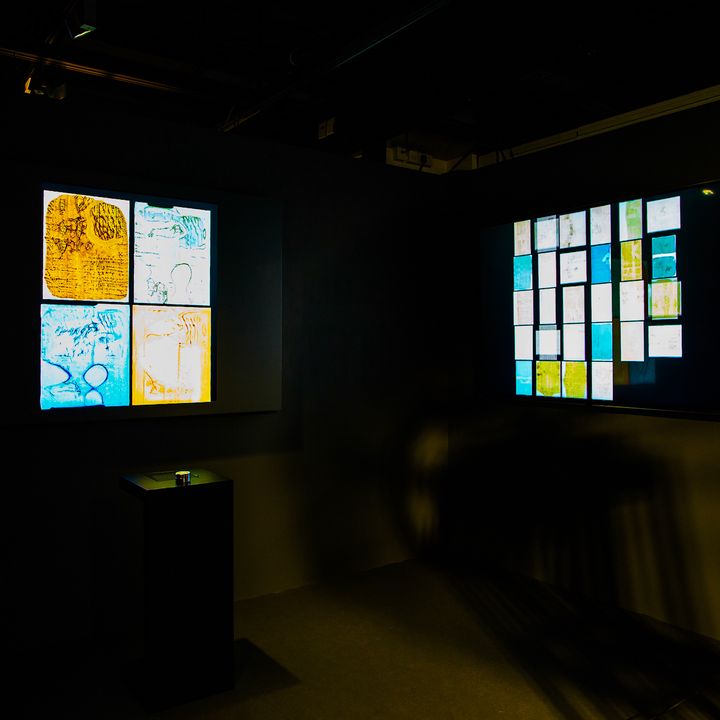Leonardo da Vinci's Dreams

Dreams are mainly driven by intuition, as the prefrontal cortex, responsible for planning and logic, exhibits decreased activity while dreaming. Therefore, seeing a person’s dreams would be the most direct path to understanding their intuitive cognitive processes.
The goal of this piece is to offer viewers a glimpse into Leonardo’s mental universe. To do so, I have trained a neural network to ‘dream up’ new notebook illustrations, similar in spirit to those of Leonardo. Viewers can interact with this generative process and explore the underlying cognitive processes that attempt to be a modern version of Leonardo’s Renaissance mind.
Neural networks imitate the learning process of a human Brian: through a combination of observation and trial and error, pathways in the brain leading to successful behavior are reinforced, whereas pathways leading to failure are inhibited. For understanding signals as diverse as audio, images, and text, neural networks now offer the most successful means of doing so, in some cases even surpassing human accuracy.
To compress the slow human learning process into manageable time frames, neural networks are now being trained with huge amounts of data and computing power. For example, Nvidia’s StyleGAN was once trained on 2.8 million cat images with computing power equivalent to the world’s fastest supercomputer running for one hour. My approach has been to train StyleGAN with the 1119 pages contained in the Veneranda Biblioteca Ambrosiana’s Codex Atlanticus. This generative adversarial network then conjures up a new body of da Vinci-inspired illustrations.


